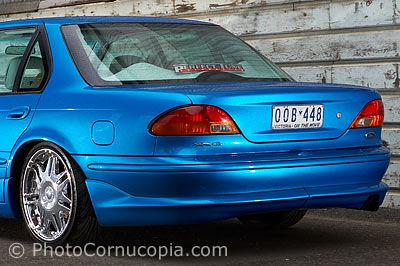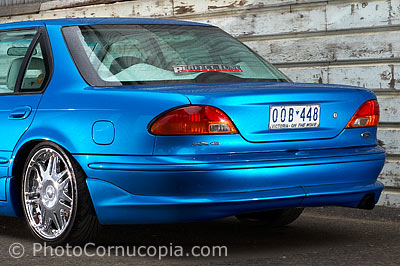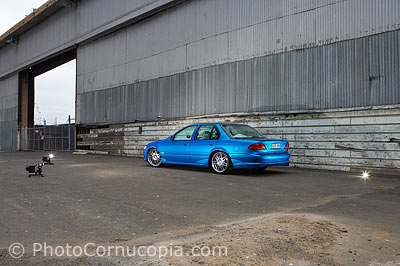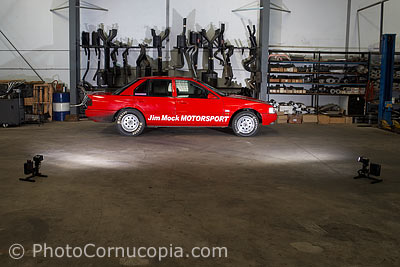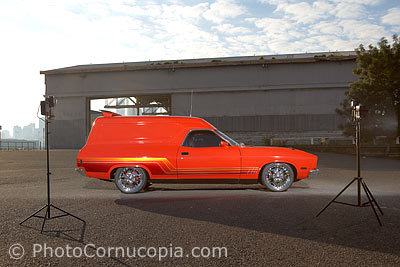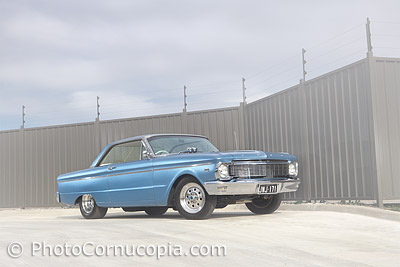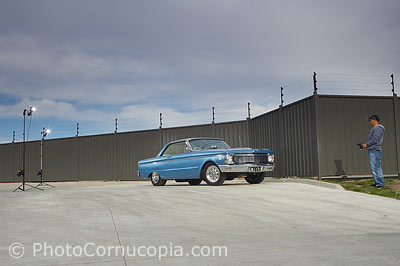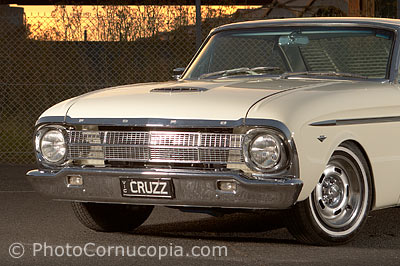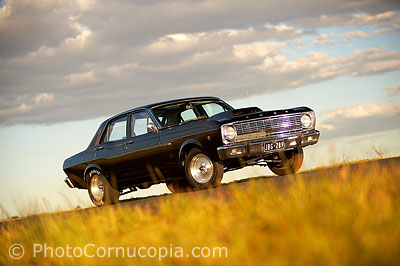|
Topic: |
Automotive Lighting
5:
Specular reflections or highlights |
|
Author/Copyright: |
John Jovic |
Any bright light
source used to light a car will be reflected in the cars panels or other
reflective parts of the car such as wheels or windows. Reflections of
the flash or light source are called specular reflections, or
highlights, and can be a common problem when shooting any highly
reflective object such as a car. When the light source is very large,
such as a clear sky after sunset or before sunrise, then the reflection
in the car is broad and relatively smooth or even. When the light source
is small, such as the sun or flash (with or without modifiers, soft
boxes etc), then the reflection of the light source in the car will
potentially be distracting or unwanted.
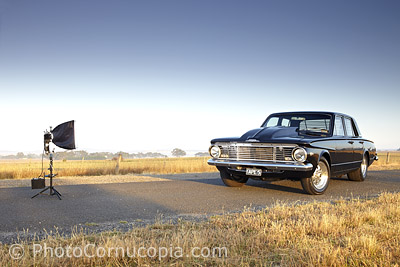 |
|
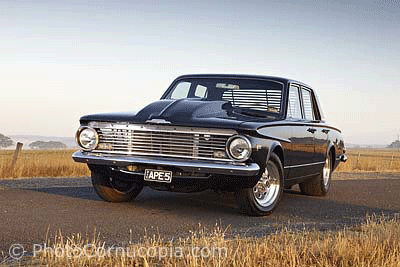 |
|
This soft box was used
to create a highlight in the chrome grille of this
car. The grille was not prominent enough without the
highlight from the strobe. In this case the
highlight or specular reflection is desirable and
intentional however such a large reflection would be
difficult if not impossible to hide elsewhere in the
car. |
|
Moving the strobe
small distances can have a significant effect on the
final image. In this case the strobe was moved no
more than a few feet for these examples. |
If
using flash equipment then you will always need to be careful
positioning flashes so that they do not create distracting specular
reflections. The position of the flash relative to the car and camera as
well as the size of any light modifiers used will all determine the size
and position of the specular reflection. Specular reflections are not a
bad thing if they are very large or used appropriately. Look at the
large reflections created by huge overhead soft boxes or reflectors,
often 20x30 feet or larger, which can be found in many specialised car studios.
Light painting can also leave a continuous
highlight all along the side of a car, along the windscreen and roof,
however this highlight is created with a continuous light sources which
moves around the car during a long exposure.
The previous page
detailed techniques which can be used to minimise shadows, such as
strobe placement, but in reality
the specular reflection of the strobe itself is potentially far more
distracting and unattractive than any shadows that may be cast. The
position of any flash equipment, or any lighting, is often dictated by
how that light reflects in the car itself and this is always determined
by a combination of factors. The shape and colour of the car, the
position of the flashes and the position of the camera itself all
determine the location of any specular reflections in the car itself.
When shooting from low to ground level it is common to be able to hide
the reflections of the flashes in the wheel arches of the car. If
shooting from a higher elevation then the flashes may also need to be
raised in which case they might be hidden in a fold, corner or bend in a
panel. Often a flash only needs to be moved an inch or 2 to make the
difference between a large specular reflection and virtually none at all.
Hiding the flashes in parts of the car may
not be possible with some cars, often those without any folds or hard
bends in panels.
If you choose to use
soft boxes or umbrellas then you will also create large specular
reflections or
highlights which might be impossible to hide or clone out in post. When lighting car exteriors
it's normally preferable to use flashes
without any light modifiers at all because this gives a much smaller
specular reflection which is easier to hide or clone out later in
post if needed. Light modifiers such as soft boxes and
umbrellas are generally way too small to create an effective specular
highlight, ie a large one, and are best reserved for detail or
people shots. The overhead lights used in some studios may be 20x30
feet, or much larger, so as to create a large enough reflection
(highlight) in the car being photographed.



